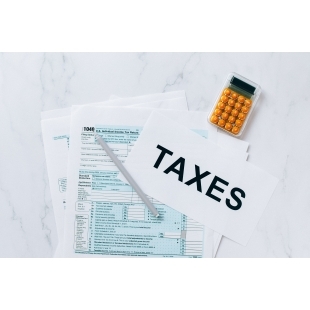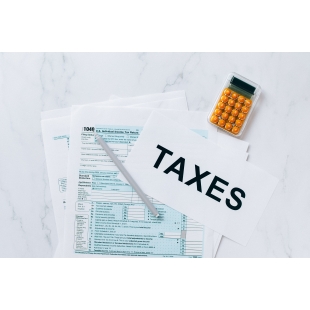US Tax information update
-

IRS announces 2022 funding for Low Income Taxpayer Clinic grant recipients
IRS announces 2022 funding for Low Income Taxpayer Clinic grant recipientsIRS announces 2022 funding for Low Income Taxpayer Clinic grant recipientsmore -

Taxpayers who owe and missed the April 18 filing deadline should file now to limit penalties and interest; not too late to claim the Child Tax Credit for 2021
Taxpayers who owe and missed the April 18 filing deadline should file now to limit penalties and interest; not too late to claim the Child Tax Credit for 2021Taxpayers who owe and missed the April 18 filing deadline should file now to limit penalties and interest; not too late to claim the Child Tax Credit for 2021more -

2021 return done? Next step: use the IRS Tax Withholding Estimator to make sure withholding is right for 2022
The Internal Revenue Service today urged any taxpayer, now finishing up their 2021 tax return, to use the IRS Tax Withholding Estimator to make sure they're having the right amount of tax taken out of their pay during 2022.
This online tool offers workers, self-employed individuals and retirees who have wage income a user-friendly resource for effectively tailoring the amount of income tax withheld from wages.
2021 refund too big? Too small? Surprise tax bill? If any of these apply, the Tax Withholding Estimator can help anyone make sure it doesn't happen again by having the right amount of taxes taken out for 2022.
Benefits of using the Estimator
For employees, withholding is the amount of federal income tax taken out of their paycheck. Taxpayers can use the results from the Tax Withholding Estimator to determine if they should complete a new Form W-4 and submit it to their employer. For example, checking withholding can:
Ensure the right amount of tax is withheld and prevent an unexpected tax bill or penalty at tax time and
Determine whether to have less tax withheld up front, thereby boosting take-home pay and reducing any refund at tax time.
When should taxpayers use this tool?
The IRS recommends checking withholding at least once a year. For anyone who has just finished filling out their 2021 return, now is a particularly good time to do it. It's also a good idea to use this tool right after a major life change, such as marriage, divorce, home purchase or the birth or adoption of a child.
What records are needed?
The Tax Withholding Estimator's results are only as accurate as the information entered. To help prepare, the IRS recommends that taxpayers gather:
Their most recent pay statements and if married, for their spouse,
Information for other sources of income and
Their most recent income tax return, 2021, if possible.
While the Tax Withholding Estimator works for most taxpayers, people with more complex tax situations should instead use the instructions in Publication 505, Tax Withholding and Estimated Tax. This includes taxpayers who owe alternative minimum tax or certain other taxes, and people with long-term capital gains or qualified dividends.
Still working on a 2021 return?
The IRS urges anyone still working on their 2021 return to make sure they have all their year-end statements in hand before filing. Besides all W-2s and 1099s, this includes two new letters issued by the IRS.
People who received advance payments of the Child Tax Credit will need to reconcile, or compare, the total received in advance with the amount they're eligible to claim. Letter 6419 shows their total advance Child Tax Credit payments to help taxpayers reconcile and receive the full amount of the 2021 Child Tax Credit.
While most eligible people already received their stimulus payments, people who are missing a third stimulus payment or got less than the full amount may be eligible to claim a Recovery Rebate Credit on their 2021 federal tax return. Letter 6475 shows their total third round of Economic Impact Payments.
Alternatively, anyone can securely sign in to their Online Account to access information on their advance Child Tax Credit payments and Economic Impact Payments.
Taxpayers should also e-file and choose direct deposit to avoid processing delays and help with faster delivery of their refund.
For most Americans, the tax-filing deadline is April 18, 2022. For residents of Maine and Massachusetts, the deadline is April 19, 2022. Americans who live and work abroad have until June 15, 2022. Those who need more time to file can get an automatic extension to file until Oct. 17, 2022. These extensions don't change the April 18 payment deadline. It is not an extension to pay. More information is available at IRS.gov.
Source: https://www.irs.gov/newsroom/2021-return-done-next-step-use-the-irs-tax-withholding-estimator-to-make-sure-withholding-is-right-for-2022
US TAX, U.S. TAX2021 return done? Next step: use the IRS Tax Withholding Estimator to make sure withholding is right for 2022more -

IRS dispels new and common myths about tax refunds; key information available to help people
IRS dispels new and common myths about tax refunds; key information available to help peopleIRS dispels new and common myths about tax refunds; key information available to help peoplemore -

IRS letters going out to taxpayers who may need to take action related to Qualified Opportunity Funds
IRS letters going out to taxpayers who may need to take action related to Qualified Opportunity FundsIRS letters going out to taxpayers who may need to take action related to Qualified Opportunity Fundsmore -

Options for taxpayers who need help paying their tax bill
Options for taxpayers who need help paying their tax billOptions for taxpayers who need help paying their tax billmore -

Time is running out to file for tax year 2018 and still get unclaimed refunds
In 2018, over a million taxpayers didn't file their federal return, leaving $1.5 billion in unclaimed refund money. It's not too late for people to file and get their refund, but the deadline is soon.
Taxpayers have until April 18, 2022, to file their 2018 return and get their refund.
If a taxpayer doesn't file their return, they usually have three years to file and claim their tax refund. If they don't file within three years, the money becomes the property of the U.S. Treasury.
To claim a refund for 2018, taxpayers must mail returns to the IRS center listed on the Form 1040 instructions PDF. While they must mail in a 2018 return, taxpayers can still e-file for 2019, 2020 and 2021.
Taxpayers can download tax forms and instructions from the IRS.gov Forms, Instructions and Publications page of IRS.gov or by calling 800-829-3676.
The IRS may hold refund checks if the taxpayer has not filed for 2019 and 2020. The IRS may also apply the refund to overdue state or federal tax bills or other state or federal debts, like child support and student loans.
Taxpayers may also be eligible for the earned income tax credit.
When people don't file a tax return, they can lose more than just their refund money. Many taxpayers are eligible for the earned income tax credit. This tax credit can reduce the tax they owe and increase the amount of their refund. It helps people and families whose incomes are less than a certain amount.
For 2018, the earned income tax credit thresholds were:
$49,194 for those with three or more qualifying children; $54,884 if married filing jointly
$45,802 for people with two qualifying children; $51,492 if married filing jointly
$40,320 for those with one qualifying child; $46,010 if married filing jointly
$15,270 for people without qualifying children; $20,950 if married filing jointly
Missing tax forms?
Taxpayers who are missing tax forms can access wage and income transcripts from their Online Account under Tax Records. This transcript has the information sent to the IRS, such as Forms W-2, 1098, 1099, Form 5498 and IRA contribution information. Taxpayers can use the information from the transcript to complete their tax forms. Alternatively, taxpayers can request copies from their employer, bank, or other payer.
Source:https://www.irs.gov/newsroom/time-is-running-out-to-file-for-tax-year-2018-and-still-get-unclaimed-refunds#:~:text=Taxpayers%20have%20until%20April%2018,property%20of%20the%20U.S.%20Treasury.
[安插點]Time is running out to file for tax year 2018 and still get unclaimed refundsmore -

Tax Time Guide: Electronic tax payment and agreement options available to taxpayers who owe
The Internal Revenue Service today reminded taxpayers who have a tax bill that there are several ways to make payments, and there are options for many people who can't pay their tax bill in full by April tax deadline.
The deadline to submit 2021 tax returns or an extension to file and pay tax owed this year falls on April 18, instead of April 15, because of the Emancipation Day holiday in the District of Columbia. Taxpayers in Maine or Massachusetts have until April 19, 2022, to file their returns due to the Patriots' Day holiday in those states. Some taxpayers who were victims of a natural disaster have even longer to file their returns.
The IRS reminds people to timely file their tax return and pay whatever they can by the filing deadline to avoid late filing and interest penalties.
Sign in to pay and see payment history
Taxpayers can use their Online Account to securely see important information when preparing to file their tax return or following up on balances or notices. Taxpayers can make a same-day payment for a 2021 tax return balance, an extension to file, or estimated taxes, which are all due by April deadline for most taxpayers. They can also view:
Their Adjusted Gross Income, Economic Impact Payment amounts and advance Child Tax Credit payment amounts needed for their 2021 return,
Payment history and any scheduled or pending payments,
Payment plan details and
Digital copies of select notices from the IRS.
Ways to pay
Electronic Funds Withdrawal (EFW): This option allows taxpayers to file and pay electronically from their bank account when using tax preparation software or a tax professional. This option is free and only available when electronically filing a tax return.
Direct Pay: Direct Pay is free and allows taxpayers to securely pay their federal taxes directly from their checking or savings account without any fees or preregistration. Taxpayers can schedule payments up to 365 days in advance. After submitting a payment through Direct Pay, taxpayers will receive immediate confirmation.
Electronic Federal Tax Payment System: This free service gives taxpayers a safe and convenient way to pay individual and business taxes by phone or online. To enroll and for more information, taxpayers can call 800-555-4477, or visit eftps.gov.
Credit card, debit card or digital wallet: Individuals can pay online, by phone or with a mobile device through any of the authorized payment processors. The processor charges a fee. The IRS doesn't receive any fees for these payments. Authorized card processors and phone numbers are available at IRS.gov/payments.
Cash: For taxpayers who prefer to pay in cash, the IRS offers a way to pay taxes at one of its Cash Processing Companies at participating retail stores. The IRS urges taxpayers choosing this option to start early because it involves a four-step process. Details, including answers to frequently asked questions, are at IRS.gov/paywithcash.
Check or Money Order: Payments made by check or money order should be made payable to the "United States Treasury." To help ensure that the payment gets credited promptly, taxpayers should also enclose a Form 1040-V PDF payment voucher and print on the front of the check or money order: "2021 Form 1040"; name; address; daytime phone number; and Social Security number.
File by April 18, 2022 for most taxpayers
The most important thing everyone with a tax bill should do is file a return by the April 18 due date, for most taxpayers (even if they can't pay in full). Taxpayers may also request a six-month extension to file by October 17, 2022, to avoid penalties and interest for failing to file on time.
Though automatic tax-filing extensions are available to anyone who wants one, these extensions don't change the payment deadline. It is not an extension to pay. Visit IRS.gov/extensions for details.
Usually anyone who owes tax and waits until after that date to file will be charged a late-filing penalty of 5% per month. So, if a tax return is complete, filing it by April 18 is always less costly, even if the full amount due can't be paid on time.
IRS Free File is an easy, quick way to file that is available to eligible individuals and families who earned $73,000 or less in 2021. IRS Free File is available on IRS.gov.
Pay what you can
Interest, plus the late-payment penalty, will apply to any payments made after April 18. Making a payment, even a partial payment, will help limit penalty and interest charges. The fastest and easiest way to pay a personal tax bill is with Direct Pay, available only on IRS.gov. For a rundown of other payment options, visit IRS.gov/payments.
The IRS urges taxpayers to first consider other options for payment, including getting a loan to pay the amount due. In many cases, loan costs may be lower than the combination of interest and penalties the IRS must charge under federal law. Normally, the late-payment penalty is one-half-of-one percent (0.5%) per month. The interest rate, adjusted quarterly, is currently 3% per year, compounded daily.
If a loan isn't possible, the IRS can often help.
Online payment plans
Most individual taxpayers qualify to set up an online payment plan with the IRS, and it only takes a few minutes to apply. Applicants are notified immediately if their request is approved. No need to call or write to the IRS. The IRS notes that online payment plans are processed more quickly than requests submitted with electronically-filed tax returns. If a taxpayer just filed their return and knows that they'll owe a balance, they may be able to set up a payment plan online before they even receive a notice or bill.
There are two main types of online payment plans:
Short-term payment plan – The payment period is 180 days or less and the total amount owed is less than $100,000 in combined tax, penalties and interest. There's no fee for setting one up, though interest and the late-payment penalty continue to accrue.
Long-term payment plan – Payments are made monthly, and the amount owed must be less than $50,000 in combined tax, penalties and interest. If the IRS approves a long-term payment plan, also known as an installment agreement, a setup fee normally applies. But low-income taxpayers may qualify to have the fee waived or reimbursed. In addition, for anyone who filed their return on time, the late-payment penalty rate is cut in half while an installment agreement is in effect. This means that the penalty accrues at the rate of one-quarter-of-one percent (0.25%) per month, instead of the usual one-half-of-one percent (0.5%) per month.
Taxpayers who do not qualify for an online payment agreement may still be able to arrange to pay in installments. See Additional Information on Payment Plans for more information.
Other payment options
Some struggling taxpayers may also consider using these other payment options:
Delayed collection
If the IRS determines a taxpayer is unable to pay, it may delay collection until their financial condition improves. However, the total amount owed will still increase because penalties and interest are charged until paid in full. Taxpayers can request a delay by calling the phone number on their notice or 800-829-1040.
Penalty relief
Some taxpayers qualify to have their late-filing or late-payment penalties reduced or eliminated. This can be done on a case-by-case basis, based on reasonable cause. Alternatively, where a taxpayer has a history of compliance, the IRS can typically provide relief under the First Time Abatement program. Visit IRS.gov/penaltyrelief for details.
Offer in Compromise
Some taxpayers qualify to settle their tax bill for less than the full amount due, through an offer in compromise. Though there is typically a $205 non-refundable application fee, it is generally waived for low-income taxpayers and for offers based on doubt as to liability. The Offer in Compromise Pre-Qualifier tool can help determine eligibility for anyone interested in applying.
The IRS reminds taxpayers that they have rights and protections throughout the collection process. For details, see Taxpayer Bill of Rights and Publication 1, Your Rights as a Taxpayer PDF.
For more information about payments, see Topic No. 202, Tax Payment Options, on IRS.gov.
Taxpayers should know before they owe. The IRS encourages all taxpayers to check their withholding with the IRS Tax Withholding Estimator.
This news release is part of a series called the Tax Time Guide, a resource to help taxpayers file an accurate tax return. Additional help is available in Publication 17, Your Federal Income Tax.
Source:https://www.irs.gov/newsroom/tax-time-guide-electronic-tax-payment-and-agreement-options-available-to-taxpayers-who-oweTax Time Guide: Electronic tax payment and agreement options available to taxpayers who owemore -

Offshore Voluntary Compliance Efforts Top $10 Billion; More Than 100,000 Taxpayers Come Back into Compliance
As international compliance efforts pass several new milestones, the Internal Revenue Service reminds U.S. taxpayers with undisclosed offshore accounts that they should use existing paths to come into full compliance with their federal tax obligations.
Updated data shows 55,800 taxpayers have come into the Offshore Voluntary Disclosure Program (OVDP) to resolve their tax obligations, paying more than $9.9 billion in taxes, interest and penalties since 2009. In addition, another 48,000 taxpayers have made use of separate streamlined procedures to correct prior non-willful omissions and meet their federal tax obligations, paying approximately $450 million in taxes, interest and penalties.
“The IRS has passed several major milestones in our offshore efforts, collecting a combined $10 billion with 100,000 taxpayers coming back into compliance,” said IRS Commissioner John Koskinen. “As we continue to receive more information on foreign accounts, people’s ability to avoid detection becomes harder and harder. The IRS continues to urge those people with international tax issues to come forward to meet their tax obligations.”
Under the Foreign Account Tax Compliance Act (FATCA) and the network of inter-governmental agreements (IGAs) between the U.S. and partner jurisdictions, automatic third-party account reporting has entered its second year. More information also continues to come to the IRS as a result of the Department of Justice’s Swiss Bank Program. As part of a series on non-prosecution agreements, the participating banks continue to provide information on potential non-compliance by U.S. taxpayers.
OVDP offers taxpayers with undisclosed income from foreign financial accounts and assets an opportunity to get current with their tax returns and information reporting obligations. The program encourages taxpayers to voluntarily disclose foreign financial accounts and assets now rather than risk detection by the IRS at a later date and face more severe penalties and possible criminal prosecution.
The IRS developed the Streamlined Filing Compliance Procedures to accommodate taxpayers with non-willful compliance issues. Submissions have been made by taxpayers residing in the U.S. and from those residing in countries around the globe. The streamlined procedures have resulted in the submission of more than 96,000 delinquent and amended income tax returns from the 48,000 taxpayers using these procedures. A separate process exists for those taxpayers who have paid their income taxes but omitted certain other information returns, such as the Report of Foreign Bank and Financial Accounts (FBAR).
Form Updates and Change in Phone Numbers
The IRS recently revised the certification forms used for the Streamlined Filing Compliance Procedures. The most current versions of Forms 14653 PDF and 14654 PDF are available on IRS.gov.
Commonly used telephone numbers relating to the Offshore Voluntary Disclosure Program (OVDP) and the Streamlined Filing Compliance Procedures have also changed.
Source:https://www.irs.gov/newsroom/offshore-voluntary-compliance-efforts-top-10-billion-more-than-100000-taxpayers-come-back-into-complianceOffshore Voluntary Compliance Efforts Top $10 Billion; More Than 100,000 Taxpayers Come Back into Compliancemore -

IRS Low Income Tax Clinics can help taxpayers resolve federal tax issues
Low-income taxpayers who need help resolving a tax dispute with the IRS and can't afford representation, may qualify for free or low-cost assistance from a Low Income Tax Clinic. These clinics are independent from the IRS and from the agency's Taxpayer Advocate Service.
How LITCs can help taxpayers
These clinics can represent taxpayers in audits, appeals, and tax collection disputes before the IRS and in court. LITCs can also help taxpayers respond to IRS notices and correct account problems. They also can provide information about taxpayer rights and responsibilities in different languages for taxpayers for whom English is a second language.
Who qualifies for help from LITCs
To qualify for assistance from an LITC, a taxpayer's income must be below a certain threshold, and the amount in dispute with the IRS is usually less than $50,000. For details taxpayers should review the Low Income Taxpayer Clinic Income Eligibility Guidelines.
How to find the nearest LITC
Taxpayers can find the LITC closest to them by reviewing the Low Income Taxpayer Clinic List PDF or using the Low Income Taxpayer Clinic finder on the Taxpayer Advocate Service website.
The IRS is looking for organizations interested in joining the LITC Program
Organizations interested in representing, educating and advocating for low-income and English as a second language taxpayers should watch this video about applying for an LITC grant and review the most recent application package PDF.
Currently there are no LITCs in Montana and North Dakota, or the territory of Puerto Rico. There are also unserved counties in Arizona, Florida, Idaho, Nevada, North Carolina, and Pennsylvania. Qualifying organizations looking to serve taxpayers in these areas are strongly encouraged to apply.
A complete list of current LITCs and their locations is in Publication 4134 PDF. Organizations who have questions or need additional information about the LITC program or application process, please contact Karen Tober with the LITC program office by email at litcprogramoffice@irs.gov.
Source:https://www.irs.gov/newsroom/irs-low-income-tax-clinics-can-help-taxpayers-resolve-federal-tax-issuesIRS Low Income Tax Clinics can help taxpayers resolve federal tax issuesmore -

IRS unveils voice and chat bots to assist taxpayers with simple collection questions and tasks; provides faster service, reduced wait times
The Internal Revenue Service today announced it has begun using voice and chat bots on two of its specialized toll-free telephone assistance lines and IRS.gov, enabling taxpayers with simple payment or collection notice questions to get what they need quickly and avoid waiting. Taxpayers can still speak with an IRS telephone representative if needed.
"Our phone lines continue to see unprecedented demand, and the IRS continues to look for ways to help people and avoid long wait times," said IRS Commissioner Chuck Rettig. "Our telephone representatives remain an important part of the service we provide, but these bots can help some people avoid lengthy phone delays for something that could be resolved on the spot. This is part of a larger effort to help people get the assistance they need this tax season."
The IRS in recent weeks has deployed voice and chat bots in English and Spanish for phone lines that assist taxpayers with tax payments issues or understanding an IRS notice they may have received. People with general tax season questions generally will not encounter these features at this time. The bots are now available to help taxpayers with:
How to make one-time payments
Answers to frequently asked questions
Collection notice clarification
Voice bots are software powered by artificial intelligence (AI) that allow a caller to navigate an interactive voice response (IVR) system with their voice, generally using natural language. Chat bots simulate human conversation through web-based text interaction, also using AI-powered software to respond to natural language prompts. Taxpayers who request to speak with a customer service representative will be placed in queue for English or Spanish ACS telephone assistance. The IRS voice and chat bots currently provide unauthenticated services, which means they cannot provide assistance with a taxpayer's protected account information.
"Voice and chat bots interact with taxpayers in easy-to-follow ways, which means taxpayers don't have to wait on hold to handle simple tasks," said Darren Guillot, Commissioner of Small Business/Self Employed Collection at the IRS.
Later in 2022, IRS voice bots will also enable taxpayers to authenticate their identity to establish payment plans, request a transcript and obtain information about their accounts, such as payoff details. The IRS plans to roll out more voice and chat bots later in 2022 to assist taxpayers with more complex issues.
IRS toll-free telephone lines receive millions of calls a year. A customer service representative spends on average nearly 20 minutes with each taxpayer they help on a collection issue. Freeing up IRS phone assistors for taxpayers with complex collection issues who need to speak with someone is another major benefit of voice and chat bots.
In addition to the payment lines, voice bots helped people calling the Economic Impact Payment (EIP) toll-free line, providing general procedural responses to frequently asked questions. The IRS also added voice bots for the Advance Child Tax Credit toll-free line in February to provide similar assistance to callers who need help reconciling the credits on their 2021 tax return.
The IRS also reminds taxpayers about numerous other self-service options that are available.
Source:https://www.irs.gov/newsroom/irs-unveils-voice-and-chat-bots-to-assist-taxpayers-with-simple-collection-questions-and-tasks-provides-faster-service-reduced-wait-timesIRS unveils voice and chat bots to assist taxpayers with simple collection questions and tasks; provides faster service, reduced wait timesmore -

IRS highlights importance of Child and Dependent Care Credit; can help families, others
The Internal Revenue Service issued a filing season reminder today that those taxpayers who pay expenses for the care of a qualifying person while working or looking for work may qualify for an important tax credit.
The Child and Dependent Care Credit is expanded for tax year 2021. This means that more taxpayers will qualify this year than ever before, and the credit will be worth more. Taxpayers with an adjusted gross income of more than $438,000 are not eligible for this credit.
"There are many important tax credits available for families, and we don't want anyone to overlook the Child and Dependent Care Credit," said IRS Commissioner Chuck Rettig. "We encourage families and others who may qualify for this credit to carefully review the criteria to make sure they receive the maximum amount they're entitled to. We also encourage the tax professional communities and others to share this important information."
Depending on their income, taxpayers can get a credit worth 50% of their qualifying childcare expenses. For tax year 2021, the maximum eligible expense for this credit is $8,000 for one qualifying person and $16,000 for two or more.
For the purposes of this credit, the IRS defines a qualifying person as:
A taxpayer's dependent who is 12 or younger (no age limit if incapacitated) when the care is provided.
A taxpayer's spouse who is physically or mentally unable to care for themselves and lived with the taxpayer for more than half the year.
Someone who is physically or mentally unable to take care of themselves and lived with the taxpayer for six months and is either:
the taxpayer's dependent or
would have been the taxpayer's dependent except for one of the following:
The qualifying person received gross income of $4,300 or more
The qualifying person filed a joint return
The taxpayer or spouse, if filing jointly, could be claimed as a dependent on someone else's return
Taxpayers can use the Interactive Tax Assistant or see the Frequently Asked Questions on IRS.gov to determine if they can claim this credit. For IRS partners, there's a special promotional flyer available PDF.
The IRS has been highlighting this credit in a number of ways, including Tax Tips, fact sheets, news releases as well as through Twitter and other IRS social media and outreach channels. It's also featured in a special IRS YouTube video.
Source:https://www.irs.gov/newsroom/irs-highlights-importance-of-child-and-dependent-care-credit-can-help-families-othersIRS highlights importance of Child and Dependent Care Credit; can help families, othersmore












